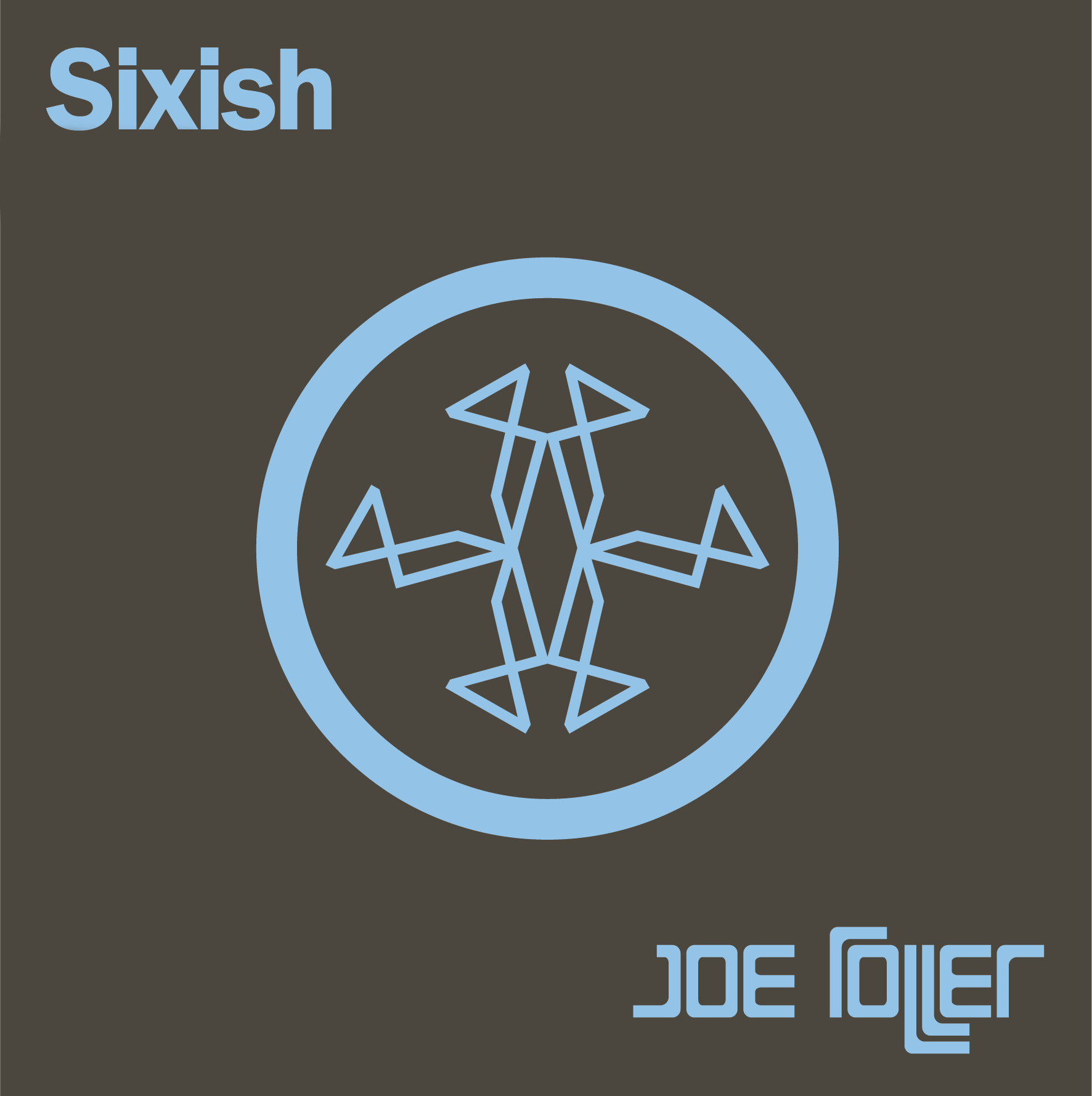Introduction
When people write music, many times they use track titles like “something,” “somethinga1,” “new idea,” “new idea 2q34234,” or “blasdfh2345” because they’re too early in the project to really have a strong concept for the track. Their Ableton folder is a mess of these types of tracks, finding anything is impossible, and data loss is inevitable. It is amazing these types get any work done at all, and if they do, chances are they aren’t making any money anyways. Why do people write like this? Because of bad version control practices. Why doesn’t anyone know effective version control practices and data recovery methods?
Well, most people think that version control is one of the most boring topics ever, and no one likes to talk about it. Why spill ink over this aspect of music production when I could write about compressors or aesthetics or something and generate more clicks? Well, put simply, version control is terrifying. Without it, you’ve found yourself explaining to a client that you’ve lost that earlier revision that they preferred. You lost data due to a hardware failure or a devastating ransomware attack, and now you look like a fool and your reputation is in damage control mode. You tried to pull up a file in front of a client using the search function, and Spotlight pulled up your collection of “gentleman’s” images instead. You are always at risk of losing your hours of hard work. Your data is at the mercy of whoever assembled your hardware in the sweatshops, and whether they did a good job at quality control that day.
Version control practices are a central component of any successful artist’s career. Effective version control involves the following components:
- Consistent File Naming and Directory Structures
- Automated Data Backup
- Data Security Practices
It is necessary that all components are employed in your version control strategies. Without consistent file naming, it is impossible to keep track of projects across multiple revisions or move them to different workstations. Realistically, backups simply will not happen unless the workstation takes care of them automatically, because it is an easy thing to forget to do with everything else going on. Another part of version control is security. If your data is vulnerable, your career is vulnerable and can be destroyed with a few keystrokes or that one malicious executable that found its way into your email.
Let us now discuss each component of effective version control.
Consistent File Naming and Directory Structures
File Naming
File names are difficult for producers because, during the early stages of a track, producers often experiment with various styles and sounds, and often don’t have a clear idea of what the concept of a track is. This leads someone to title their tracks with inconsistent nonsense instead of something usable.
The best practice for file naming is:
- [Genre] [Revision Date] (for solo projects)
- [Client] [Genre] [Revision Date] (for client work)
- [Title] [Revision Date] (for when the title is figured out)
There are mitigations one can use to avoid this. First, it is generally best if the first part of the file name is the overall genre of the track. Something like “Deep House,” “Dnb,” “Neuro,” just so there’s that additional information in the filename. And, if down the road, someone wants to change their genre completely, there is a record of the initial attempt and one can compare their first drafts of the track with subsequent ones.
It is imperative to track the revision date in tracks. Every day one starts work on the project, one should create a new file. A benefit of this is that it helps guard against file corruption. Every file system is vulnerable to hardware failures, and a hardware failure can corrupt some or the complete project file. Having multiple project files prevents total corruption, since it is unlikely that every file should be damaged, and some part of the project can be recoverable. Another advantage is that it makes tracking revisions easier. If you want to go back to an early revision of a track, having the dates there makes it easy to track which version you preferred, if you take a direction that you don’t like as much down the road, or your client prefers an earlier version. Multiple project files help mitigate damage done by accidental file deletion. We’ve all deleted files accidentally, and when you have multiple files, at least you don’t have to start from square one.
Directory Structures
Now that we’ve discussed files, let’s move on to directories, or folders. Every project should have its own directory, organized thusly:
- … /Production/[Project Name] (here’s where your project files are for easy access)
- …/Production/[Project Name]/Audio (here’s where the samples you use are, so that they aren’t spread across the hard disk)
- …/Production/[Project Name]/Images (if you have any album art, its effective to bundle it with your track so that they’re together, even if the images are in a different directory on your workstation it’s nice to have them backed up here, too)
- …/Production/[Project Name]/Audio/_export (here’s where your exports live)
- …/Production/[Project Name]/Notes (here are where your notes about the project are, saved as text files, so you can keep track of how your client responds to what you do)
It is important that your samples are copied from the sample library into the project’s directory. Be sure to refer to your DAW’s documentation for how to configure this setting. That way, samples aren’t lost if your sample library directories get corrupted, or you move them to a new hard drive without changing the paths in your DAW.
- Here’s how to set Ableton to copy samples to the working directory
- Here’s how to set Cubase to copy samples to the working directory
- Here’s how to set Logic to copy samples to the working directory
- Here’s how to set FL to copy samples to the working directory
- Here’s how to set Pro Tools to copy samples to the working directory
Another benefit is that it makes your projects easily portable across different workstations. You can just create a .zip archive and have everything you need for that particular project on a new machine. To create .zip archives, refer to the documentation for your OS.
Automated Data Backup
Data backup can be accomplished using built in tools or third-party solutions. Third-party solutions are more powerful and offer more options than what Windows or macOS offer. They ought to be configured to run daily backups to a secondary storage drive in your workstation.
For Windows, I recommend Macrium. Click here to visit their website. Macrium is excellent software, but it’s difficult to configure, so you can click here to learn how to set up scheduled backups.
Carbon Copy Cloner is a great option for macOS users. You can click here to visit their website. You can click here to learn how to set up scheduled backups.
If these software options don’t appeal to you, make sure you use a utility that creates and retains versioned backups in some way, so that in case you delete something, you can go back to an earlier backup and recover the file.
I used both of these utilities and they are excellent. Since I’m currently on Windows, I use Macrium. I wish I could say the companies behind these utilities sponsored me, but I can’t.
Data Security Practices
Version control and computer security are serious topics that you can’t take lightly.
If your data is insecure, it doesn’t really matter if it’s backed up and if you truly took the time to use effective version control strategies. Here are some common security failures most producers make daily.
Use Authorized Software
Pirated software is a security risk. Most pirated programs contain trojans that exploit known vulnerabilities in your operating system. These trojans are commonly set to execute “invisibly.” You will not see them in your Task Manager or in the Activity Monitor. Typically, these trojans will be crypto mining programs that will negatively affect your CPU performance and make your system unstable. Or, they may be keyloggers that send all your internet traffic to an attacker. Another option is that your computer may be part of a larger botnet and be a slave to a master server that instructs your workstation to send spam emails, host illegal content like child pornography for a darknet website or perform denial of service attacks on other servers.
Pirated software is a common technique to distribute ransomware. A ransomware attack is no joke, and if there is no mitigation or way to decrypt your data, you lost all your data, plain and simple. Even if you remove the ransomware infection and miraculously recover your data, ransomware now is operating as a Ransomware As A Service model, and it is likely that your machine is still infected, even if the visible aspects of its payload are gone.
You are not safe if you use macOS or GNU/Linux. The Linux kernel has been compromised. The largest botnet is currently the Mirai botnet that successfully exploits the Linux Kernel. Macintosh computers are not immune from trojan attacks; there is plenty of known crypto mining software that exploits the Apple platform, too. Your perception that your macOS computer is more secure than a Windows system is not true and may make you less cautious when you use your machine, thus making you more vulnerable to attacks.
It may be tempting to install software from images that are not from the official vendor. People in the Hackintosh community do this, and the number of users on versions of Windows from third parties seems to grow. Unless you have the skills of a professional software engineer and can successfully reverse engineer these images and examine them yourself for compromised drivers or other malicious code, you should never install this type of software out of a malware risk. With these images, it is possible for malware to be baked so deeply into the code that your machine is compromised from the moment you use it.
Another issue in using pirated software is that you give up your right to dispute cases in a court of law. While it is unlikely that you will ever be sued in the music world, you may be sued and the Court may subpoena you and force you to provide your workstation as evidence, especially in a copyright dispute. You cannot refuse the Court, unless you want to have a Contempt of Court charge. Did you know that since Contempt is not a criminal charge, you do not have the right to due process? You do know. A Contempt charge means the Court may imprison you indefinitely.
If the Court sees that you run unauthorized software, they may charge you with copyright infringement. Or, you will immediately lose the case, as the opposing counsel will make the persuasive, evidence-based argument that you are untrustworthy and refuse to follow agreements.
If you use unauthorized software, it is highly recommended to physically destroy your system disks and buy new ones, or never connect your computer to the internet.
There are also advanced ways to track computers now. If you use pirated software, your computer has been flagged, especially if you install another program legitimately that sends back your computer information to its vendor.
You may hear “well, I never had these issues!” It is likely that they do in fact have these issues but lack the appropriate skills to recognize them. Invisible malware often hides as hexadecimal code somewhere in your RAM. I doubt the person who uses pirated software knows this, or even how to view what’s going on in RAM. Musicians can really be their own worst enemy!
Rarely Open Attachments
Do not open attachments from people you do not know. Most file formats are hacked by now and are executables in disguise. VLC is exploited to run code, so is Microsoft Word, Adobe products, and most everything by now. There are even exploits for the built-in PDF viewer in iPhones. What a world!
Keep Your Computer Physically Safe
Keep your computer locked up and protected from the weather. Think about things like humidity and flood control should account for where you keep your computer.
Use a Login Password
Make sure that no one can use the computer except for people who have its password.
Encrypt Important Files
You should encrypt important files so that they are not readable in case your computer compromised. Windows and macOS offer built in encryption features. You can also use 7zip to create encrypted files.



